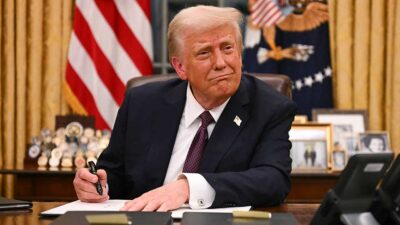Join the PU Xtrader Challenge Today
Trade with simulated capital and earn real profits after you pass our trader assessment.
Join the PU Xtrader Challenge Today
Trade with simulated capital and earn real profits after you pass our trader assessment.
On Wednesday, 6 April (GMT+3), the Federal Open Market Committee (FOMC) released the minutes for its 15-16 March meeting. As expected, the meeting was focused on discussing the tightening measures that the Fed would take to rein in galloping inflation. Chiefly, the central bank has plans to shrink its almost-US$9 trillion balance sheet at a maximum rate of $95 billion a month, with $60 billion coming from treasuries, and $35 billion coming from mortgage-backed securities.
In addition to shrinking its balance sheet, the minutes also stated that “many” Fed officials have noted that, while a 50-point increase at the meeting would have been preferred, in light of the uncertainty caused by the Russia-Ukraine conflict, the finalised 25-point hike was “appropriate”. However, “50 basis point increases in the target range could be appropriate at future meetings”, especially if the high inflation does not subside.
Post-Market
Despite 40-year high inflation numbers, gold’s attractiveness as an inflation hedge has become tepid amid rising bond yields and Fed hawkishness, since rising interest rates increase the opportunity cost of holding non-yielding gold.
Earlier on Wednesday, gold prices dipped 1.2% to $1,894.70 after Treasury yields jumped. However, the price of the precious metal has since stabilised near $1925. In a quote given to CNBC, Tai Wong, an independent metals trader in New York, has said that he expects “gold prices to trade between $1,880-$1,960 range in the near-term.
Meanwhile, news of the Fed’s aggressive stance against inflation has sent US equities tumbling and the dollar soaring, with the US Dollar Index, which measures the dollar against a basket of major currencies, hitting its highest point — 99.778 — since May 2020. This has been supported by rising Treasury bond yields, with the 10-year note hitting a high of 2.656%.
In addition, uncertainty surrounding the conflict in Eastern Europe and increasing sanctions on Russia continues to weaken commodity-linked currencies as well as the euro. European leaders have been unable to reach a conclusion on sanctioning Russian coal, with European Commission President Ursula von der Leyen saying that any new sanctions against the Kremlin would not be the last.
Eyes are now on monetary policy in the Eurozone, and investors are advised to pay close attention to the upcoming minutes of the European Central Bank meeting, which will be released on 7 April, 14:30 (GMT+3). As a friendly reminder, do keep an eye on market changes, control your positions, and manage your risk well.

Trade with simulated capital and earn real profits after you pass our trader assessment.

25 April 2025, 07:26 Triple Test Tensions: Markets on Edge

18 April 2025, 07:21 Markets Return: Key Data to Watch After Good Friday Break

11 April 2025, 07:43 Monetary Decisions, EU CPI & Tariffs—A Triple Threat for Global Markets

New Registrations Unavailable
We’re not accepting new registrations at the moment.
While new sign ups are unavailable, existing users can continue their challenges and trading activities as usual.